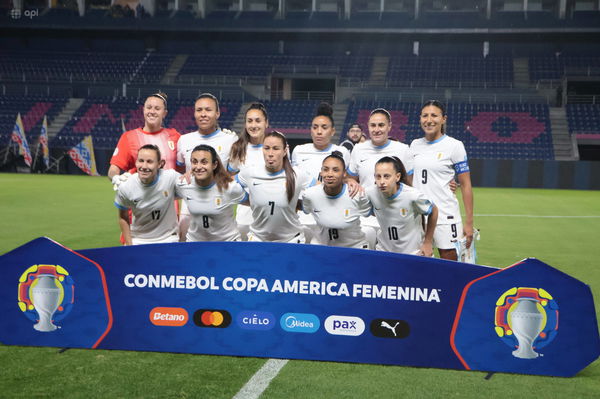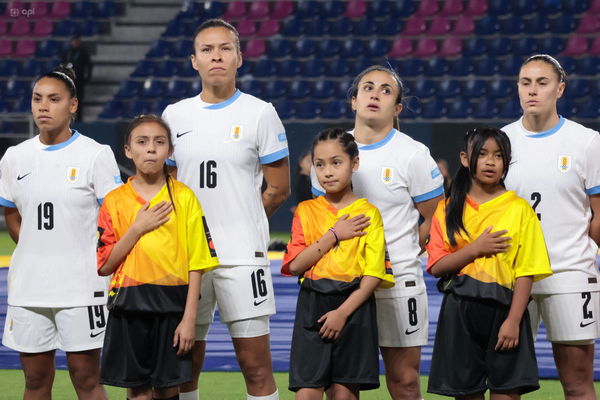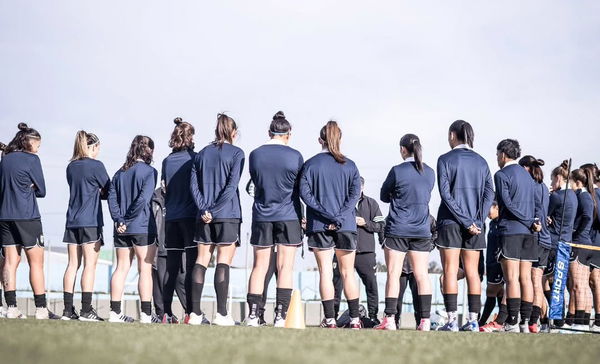
via Imago
COPA AMERICA FEMENINA 11 de julio del 2025 Encuentro entre Ecuador VS Uruguay por la Copa Amà rica Femenina en el estadio Banco Guayaquil. QUITO PICHINCHA ECUADOR *** COPA AMERICA FEMENINA July 11, 2025 Meeting between Ecuador VS Uruguay for the Copa America Femenina at the Banco Guayaquil stadium QUITO PICHINCHA ECUADOR Copyright: xHENRYxLAPOx

via Imago
COPA AMERICA FEMENINA 11 de julio del 2025 Encuentro entre Ecuador VS Uruguay por la Copa Amà rica Femenina en el estadio Banco Guayaquil. QUITO PICHINCHA ECUADOR *** COPA AMERICA FEMENINA July 11, 2025 Meeting between Ecuador VS Uruguay for the Copa America Femenina at the Banco Guayaquil stadium QUITO PICHINCHA ECUADOR Copyright: xHENRYxLAPOx
The 2025 Copa América Femenina has officially kicked off. Rivaling the ongoing UEFA Women’s Euros, this 10th edition of the South American tournament—taking place in Ecuador from July 11 to August 2—promises to be a must-watch for ardent fans. But even though it’s only been a couple of days since the tournament began, there are already complaints, with some even labeling it as ‘terrible.’
Watch What’s Trending Now!
In fact, the situation is so bad that the tournament doesn’t even have basic facilities like Virtual Assistant Referees, or VAR. Journalist Jeff Kassouf boldly highlighted this on X, pointing out that the absence of VAR sends a clear message from CONMEBOL about its lack of investment. He also noted the sheer chaos this decision invites, with no reviews to correct potential errors.
As for whether this glimpse into the pre-VAR era feels in any way refreshing, Kassouf suggested that the answer will likely vary as the tournament unfolds. Surprisingly, he wasn’t alone as echoing these views was another journalist Elizabeth Eads, who vocally replied on the tweet saying, “The games were terrible -the refs were inconsistent and no VAR made it worse!”
ADVERTISEMENT
Article continues below this ad
The games were terrible -the refs were inconsistent and no VAR made it worse!
— Elizabeth Eads, DO (@eads_elizabeth) July 14, 2025
So far, the first round of games has seen Uruguay and Ecuador open the tournament with a 2-2 draw, followed by Chile’s 3-0 win over Peru. Yesterday’s match saw Bolivia suffer a 4-0 defeat against Paraguay, and Brazil capped things off with a 2-0 victory over Venezuela. And there’s still plenty more action to come.
ADVERTISEMENT
Article continues below this ad
And still, CONMEBOL and its stakeholders have offered no effective solution, merely citing a lack of finances. This certainly poses a huge problem for the teams and players, who clearly aren’t getting the playing conditions they rightfully deserve. Looking at the bigger picture, it also reflects poorly on the apex South American federation, which deserves to be questioned for such inadequacies.
Even if they point to financial constraints, other practical solutions should have been explored. As it stands, it already paints them in a bad light, especially compared to rival federations and ongoing tournaments like the UEFA-hosted Women’s Euros. Granted, the European body doesn’t suffer from the same funding issues, but that’s hardly an excuse for CONMEBOL to simply leave things as they are.
Notably, the issue isn’t just with CONMEBOL as a whole. Just days before the Copa América Femenina was set to kick off, trouble was already brewing within Uruguay’s women’s team. Things escalated so much that their participation in the tournament was suddenly in doubt. The reason was simple: a glaring lack of support from their own national federation, which left players frustrated enough to skip training altogether in protest.

via Imago
COPA AMERICA FEMENINA 11 de julio del 2025 Encuentro entre Ecuador VS Uruguay por la Copa Amà rica Femenina en el estadio Banco Guayaquil. QUITO PICHINCHA ECUADOR *** COPA AMERICA FEMENINA July 11, 2025 Meeting between Ecuador VS Uruguay for the Copa America Femenina at the Banco Guayaquil stadium QUITO PICHINCHA ECUADOR Copyright: xHENRYxLAPOx
To even make a statement, all the Uruguay players took to Instagram stories and posted the same black-and-white photo on their Instagram stories—showing them standing shoulder to shoulder in a locker room, backs turned to the camera. Additionally, they wrote a lengthy message:
ADVERTISEMENT
Article continues below this ad
“We’re not training today because we still haven’t received a favorable response to improving our conditions. This measure isn’t against our passion, but rather a fair right. We want to represent Uruguay in the Copa America, but we also deserve fair treatment for our efforts and dedication.”
It’s not that the players are indifferent. While they’re eager to represent Uruguay at the Copa América but refuse to accept anything less than fair treatment and proper respect for their efforts. Remarkably, it’s a stance that brings to mind the US Women’s National Team’s high-profile battle for equal pay, led by outspoken stars like Megan Rapinoe and Alex Morgan. In fact, seems like this inspiration from the American ladies worked for the Uruguayan women’s national team, who got their justice!
While teams await CONMEBOL justice, the Uruguay women’s team gets theirs!
After having sat out of training as a gesture of protest, the Uruguay women’s team successfully reached an agreement with AUF on Tuesday. “It ended positively,” MUFP General Secretary Mitchell Duarte told The Athletic, adding that the federation has agreed to demands, including giving access to the national team training center, better overall training conditions and gear, official recognition as a full national team rather than just a “development team,” and higher daily allowances for both domestic and international duty.
Further clarification was given by MUFP in an official statement on their social media, with players also spreading the word. Then again, Duarte added that intrinsic details like transfers, meals, and various other details are yet to be addressed. “We will continue working with the commitment to improve conditions and continue promoting our sports development,” read the statement after some “intense negotiations” with the authorities.
Interestingly, this isn’t the first time Uruguay’s women have broken their silence to seek better treatment. Precisely around two years ago, close to 300 women involved in soccer across Uruguay—spanning all levels, including the professional game—joined forces to demand improved conditions. Their list of grievances was long and serious.

via Imago
Credits: Instagram/auf.femenino
It included having to train in dire environments, playing on fields so poorly maintained they were nearly unusable, and making do with dressing rooms that lacked even basic facilities. On top of that, players were handed leftover gear from men’s teams, often had to cover costs for travel, staff, and equipment themselves, and got no financial help from clubs if injured. They also pointed out how clubs failed to give them any meaningful visibility, whether on social media or elsewhere.
While one might hope these problems had been addressed over the past couple of years, the fact that players are once again taking a stand makes it clear that many of these issues still linger. Regardless, now, from the looks of it, the majority of the issues seem to have been solved by the Uruguayan federation.
The only case that needs utmost attention is CONMEBOL’s failure to provide even the basic necessities for running the Copa América Femenina. Perhaps, just as the Uruguay players fought their own battle, the remaining nine South American nations could also start questioning CONMEBOL over these issues. Because clearly, it’s affecting both the teams and the players alike!
What are your thoughts on this? Share in the comments.
ADVERTISEMENT
ADVERTISEMENT
ADVERTISEMENT
ADVERTISEMENT


